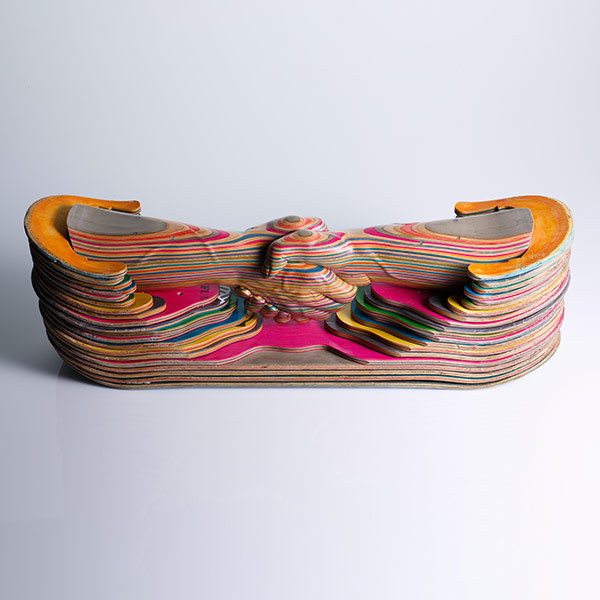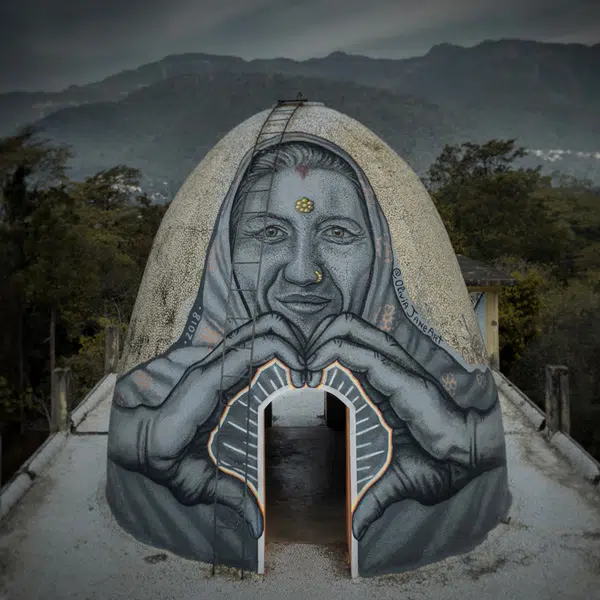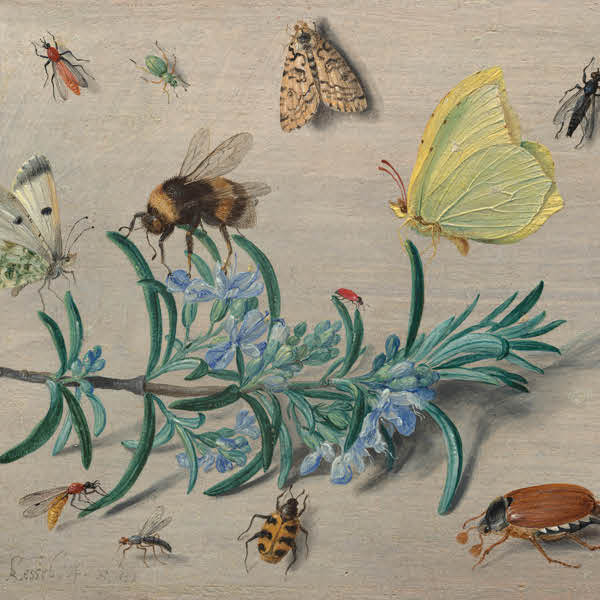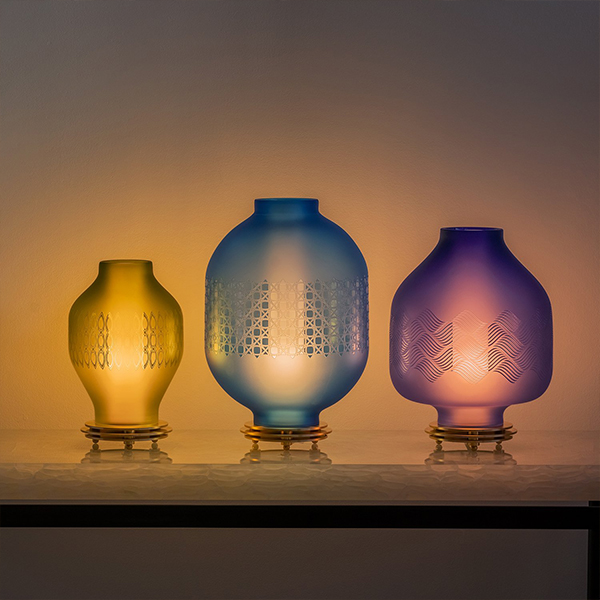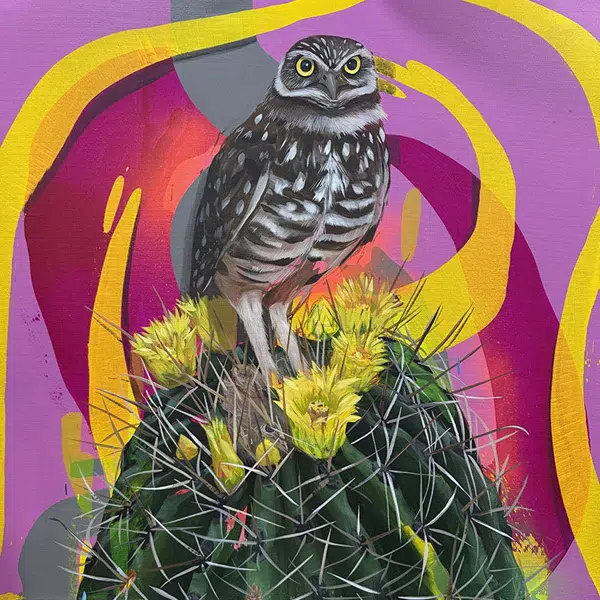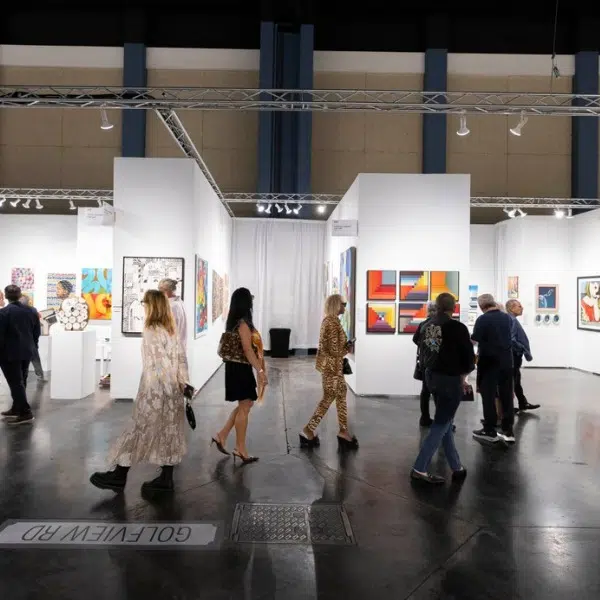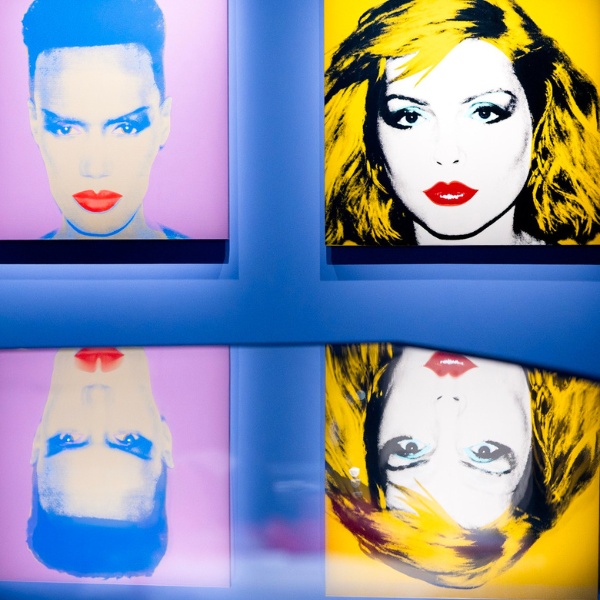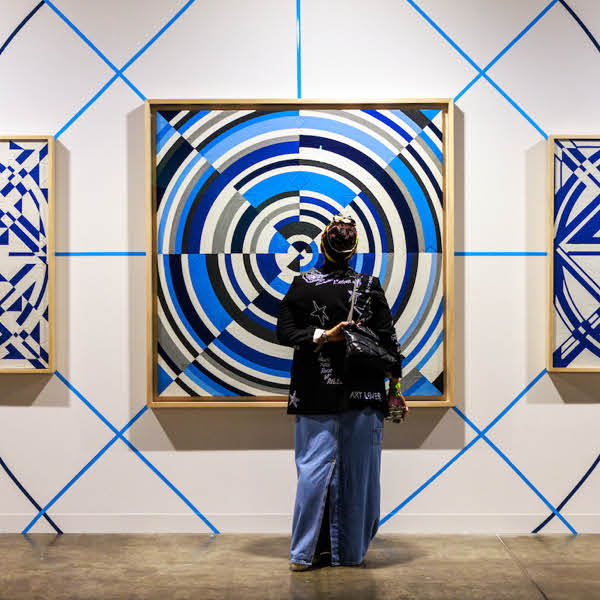For over a decade, self-taught woodcarver Haroshi has been recycling old skateboard decks into magnificent multilayered works of art. Stacking, shaving, cutting, and carving the wooden decks together, he then paints and polishes the pieces to form colorfully streaked or pixelated mosaics that have a distinct, cheeky style which is utterly his own. A passionate skater since his early teens, the Tokyo-based mastermind is familiar with the workings of a skateboard and the curves that make up its essential design. As the contours of each board vary, depending on brand and model, his background helps him to seamlessly fit the board remnants together, allowing vibrant creations to be realized.
Traditional wooden Japanese Buddhas are built using a method that is similar to the one Haroshi incorporates in his sculptural design. Carved from wood, and stacked in layers that form a mosaic, these iconic figures are fabricated in such a way to save on material cost and weight. Haroshi also characteristically buries a broken piece of skateboard within the core of his sculptures, “giving soul” to his works, just as ancient Buddhist artists such as Unkei would do to their statues in the 12th century (although they typically used crystal balls rather than skateboard ball-bearings).
As his artistic statement explains: “[Haroshi's] art pieces are equal to his skateboards, and that means they are his life itself. They’re his communication tool with both himself, and the outside world.” Vibrant, candy-colored stripes of polished wood come together to form brilliant pieces which, though seemingly simple in design, often have a deeper meaning and intention bestowed in their processed layers.





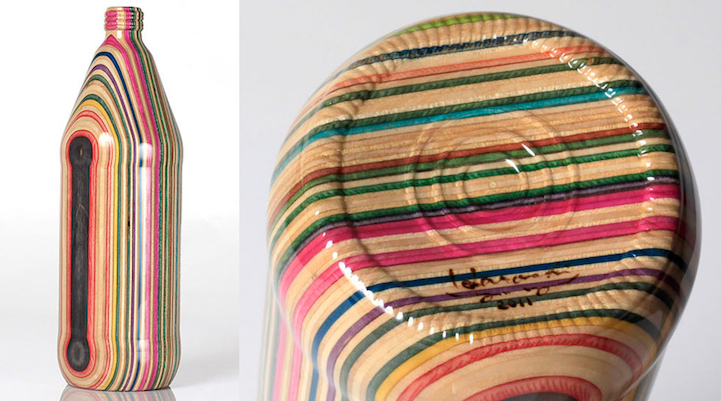


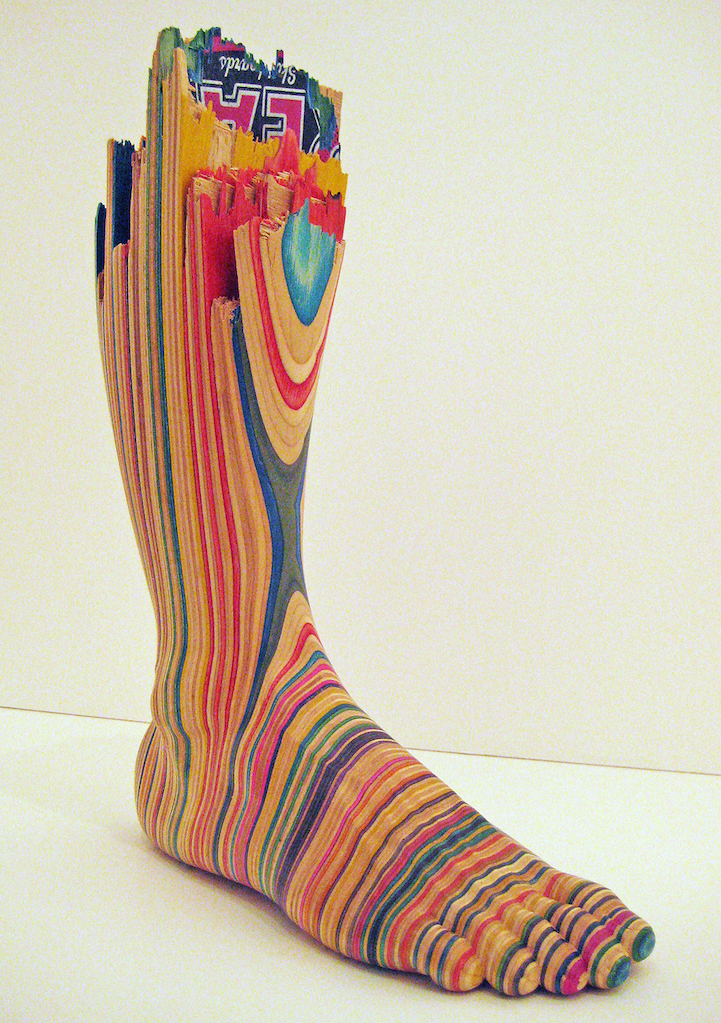



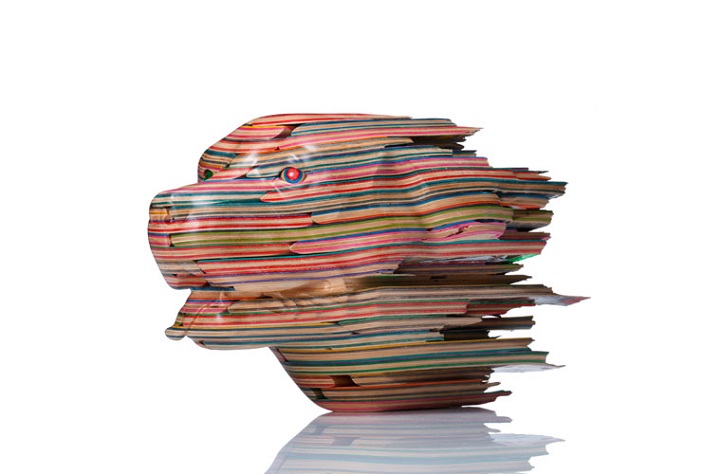






Haroshi: Website | Facebook | Instagram
via [UpperPlayground]
Images via Jonathan LeVine Gallery and Haroshi.
